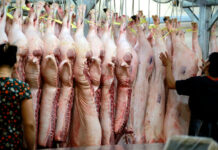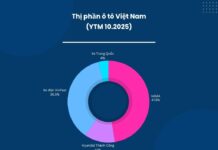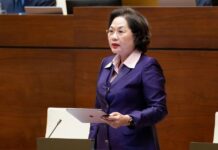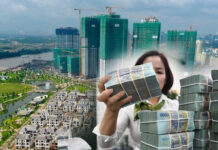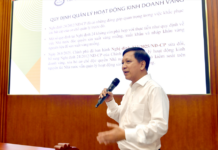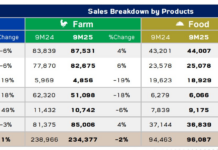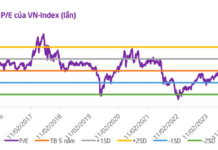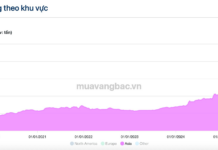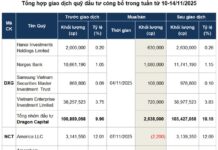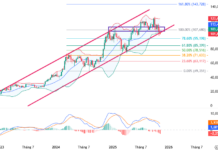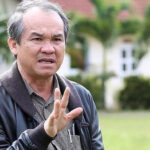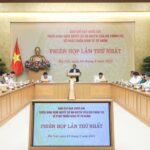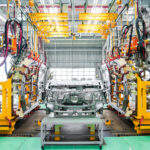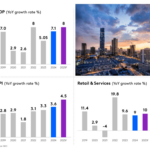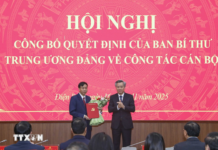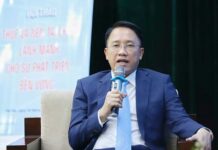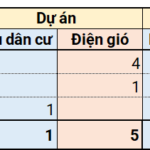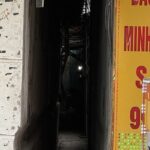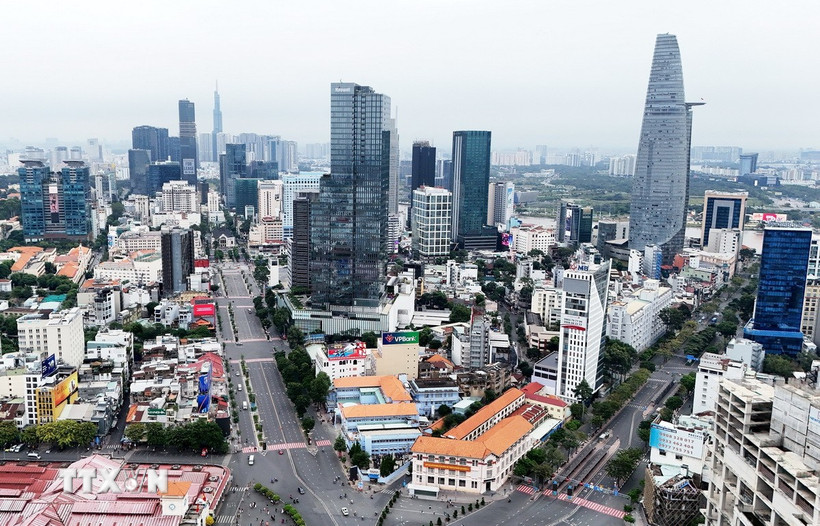
|
Vietnam is inching closer to becoming Asia’s next economic tiger, according to AP News. The country’s ambitious reforms and vision for a new era of development are propelling it towards this goal.
|
In an article published on August 13, AP News highlights Vietnam’s aspiration to become a high-income nation by 2045, mirroring the impressive growth trajectories of countries such as South Korea and Taiwan. However, achieving this goal requires a delicate balance between economic growth and reform, while also addressing challenges such as an aging population, climate change, and institutional reforms.
The pressure is heightened as the United States, one of Vietnam’s largest trading partners, imposes tariffs on several economies, including Vietnam, due to trade surpluses. This development reflects Vietnam’s rapid growth path in recent times.
Since 1990, the purchasing power of an average Vietnamese citizen has increased significantly. Back then, they could afford about $1,200 per year for goods and services (adjusted for local prices). Today, that figure has surged more than 13 times to nearly $16,385. Vietnam has transformed from a less developed economy to a global manufacturing hub, boasting modern highways, skyscrapers, a growing middle class, and millions lifted out of poverty.
However, the model reliant on cheap labor and exports is slowing down, and reforms such as expanding the private sector, strengthening social security, and investing in technology and green energy face the pressing challenge of climate change. Mimi Vu, an expert from consulting firm Raise Partners, emphasizes the urgency of the situation: “All resources need to be mobilized. We cannot afford to miss this timing.”
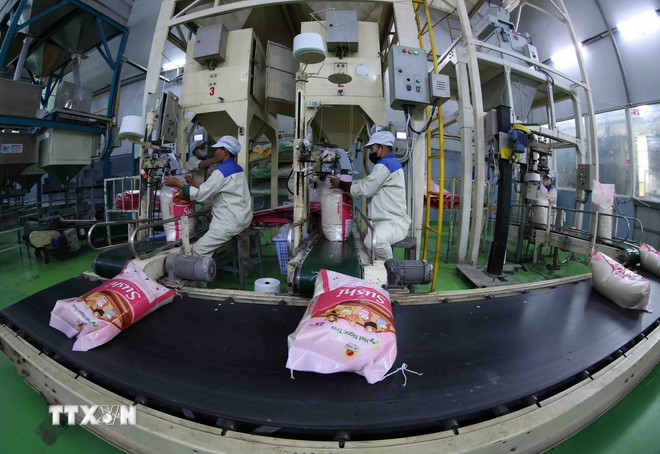
|
Vietnam’s booming exports and the pressure to sustain growth.
|
The influx of foreign investment has fueled Vietnam’s export expansion, with once-quiet outskirts now bustling with industrial zones. In 2024, the country achieved a trade surplus of $123.5 billion with the United States.
As President Donald Trump prioritized reducing trade deficits with other countries, the US imposed a 20% tariff on goods imported from Vietnam. This could impact some key export sectors. However, former US Ambassador to Vietnam, Daniel Kritenbrink, suggests that Vietnam will likely compare its tariffs with those of its neighbors and competitors. He says, “As long as they’re in the same region and ballpark, I think Vietnam can live with that.”
Even before this development, Vietnam was aware of the risk of falling into the middle-income trap without breakthrough reforms. South Korea bypassed this trap through electronics, Taiwan through semiconductors, and Singapore through finance. But Vietnam’s economy is more diverse than these countries were at their turning points, making it challenging to rely solely on a single industry as labor costs rise.
Richard McClellan, founder of consulting and auditing firm RMAC, asserts, “A breakthrough strategy is needed.”
Vietnam is pinning its hopes on high-tech sectors such as semiconductors, artificial intelligence (AI), and renewable energy, along with tax incentives and research support in Hanoi, Ho Chi Minh City, and Danang.
Infrastructure development continues to be a focus, including plans for a civilian nuclear power plant and a $67 billion high-speed rail project connecting Hanoi and Ho Chi Minh City, reducing travel time to just eight hours.
Additionally, Vietnam aspires to become a regional financial hub, with proposals for two special financial centers in Ho Chi Minh City and Danang. These centers will enjoy flexible management, tax incentives, support for fintech startups, and improved dispute resolution mechanisms.
Underpinning these bold changes are institutional reforms. Central and local government ministries are being merged, administrative machinery is being streamlined, and administrative units are being consolidated into regional economic centers.
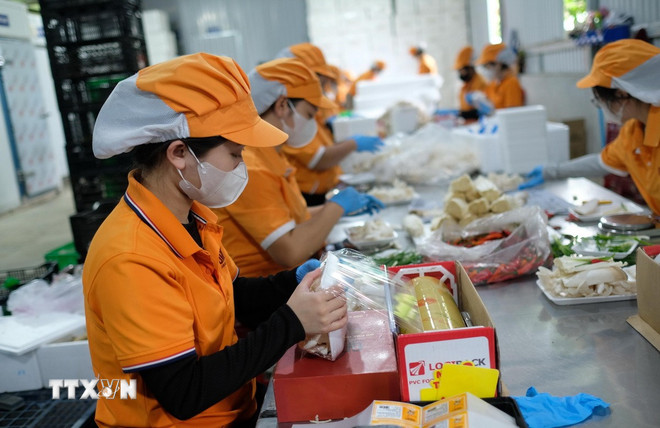
|
Private sector – the new driving force
|
Resolution 68 of the Politburo, issued in May 2025, recognizes private enterprises as a “crucial force” in the economy and pledges to improve the business environment, remove barriers, and facilitate breakthroughs.
Previously, Vietnam’s exports were largely driven by multinational corporations, while domestic enterprises operated in lower-value segments and faced challenges in accessing capital. The new policy prioritizes technology-investing enterprises, offers opportunities to participate in large projects like the North-South high-speed rail, and sets a target of having at least 20 private enterprises with global reach by 2030.
Challenges posed by climate change and an aging population
Climate change is directly impacting business operations. Bruno Jaspaert, director of the DEEP C Industrial Zones in Haiphong, recalls losing a key investor due to flooding. This experience prompted him to develop a more detailed contingency plan.
Typhoon Yagi, which hit Vietnam in 2024, caused approximately $1.6 billion in damages and reduced GDP by 0.15%. While the storm ravaged factories that contributed nearly half of the country’s economic output, the internal roads of DEEP C remained dry.
The World Bank warns that without robust action, Vietnam could lose 12-14.5% of its GDP annually by 2050, and about one million people could be pushed into extreme poverty by 2030.
Additionally, Vietnam’s “golden population” phase is expected to end by 2039, with the workforce projected to peak in 2042. Experts recommend focusing on expanding preventive healthcare, raising the retirement age, and increasing the participation of women in the workforce to maintain productivity and promote healthy aging.
Diệu Linh
– 19:17 13/08/2025
The Attention-Grabbing Move of the Company Associated with Duc Hoang Anh
“The thriving Hung Thinh Loi Gia Lai Company, with a majority stake held by Hoang Anh Gia Lai Joint Stock Company, has just launched an enticing investment opportunity. The company has issued 10,000 bonds, coded HTL12501, offering a fixed interest rate of 10.5% per annum. These bonds have a maturity date of August 8, 2028, presenting a stable and attractive investment prospect for discerning investors.”
“Government Leader Emphasizes on Measuring Results in Serving Citizens and Businesses”
Prime Minister Pham Minh Chinh has emphasized the importance of developing criteria to gauge public and business satisfaction with government services. He has directed the government to create measurable indicators that accurately reflect the quality of services provided to citizens and enterprises alike.
The Power of the Vietnamese Economy: Outperforming Singapore and Thailand, Creating Retail Opportunities, Yet Businesses Face a Double Whammy.
The corporate world is abuzz with exciting developments: Central Retail Vietnam inaugurates its 43rd GO! shopping center in Hung Yen with a substantial investment of 429 billion VND, while the new CEO of AEON Vietnam reveals plans to launch four large-scale shopping centers and ten MaxValue supermarkets across the country.

